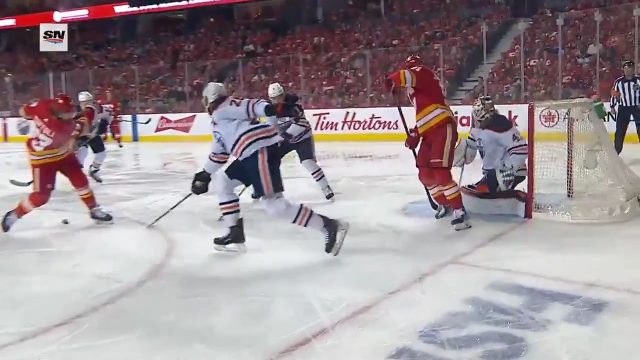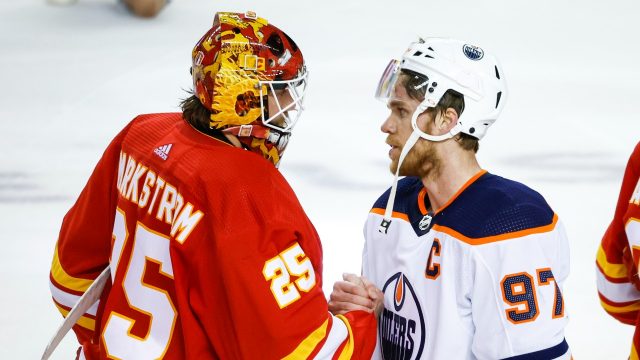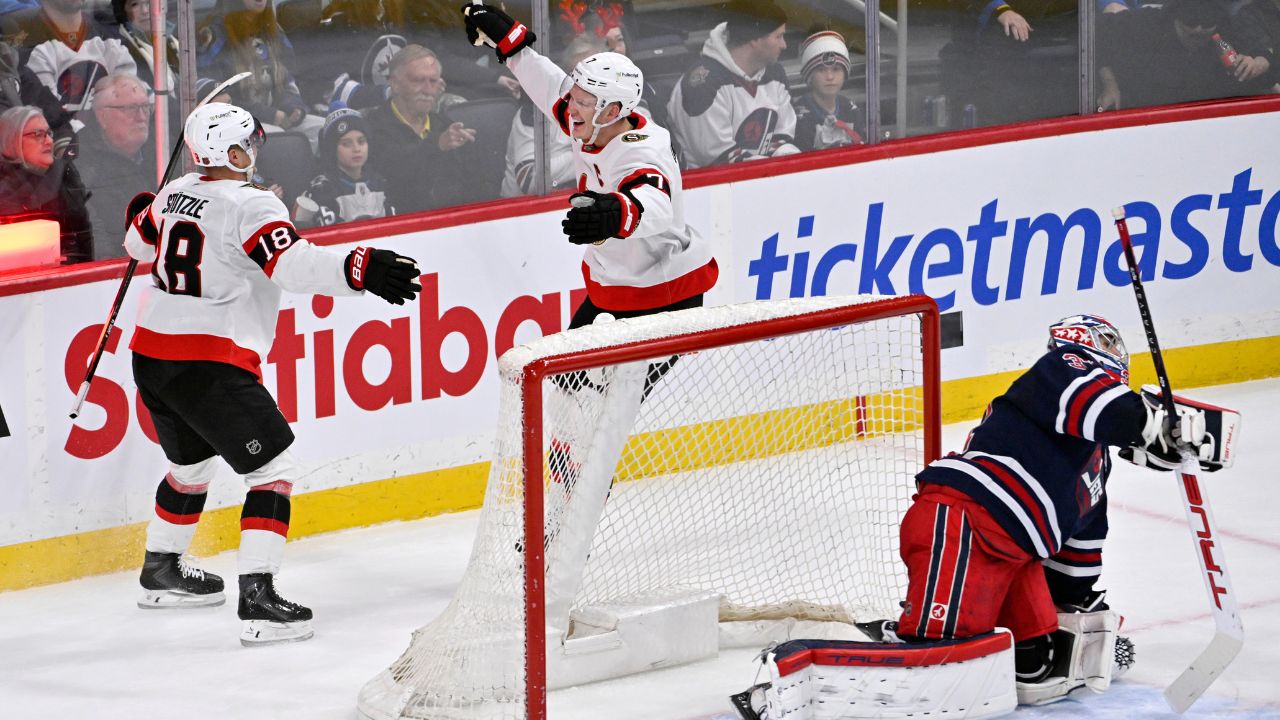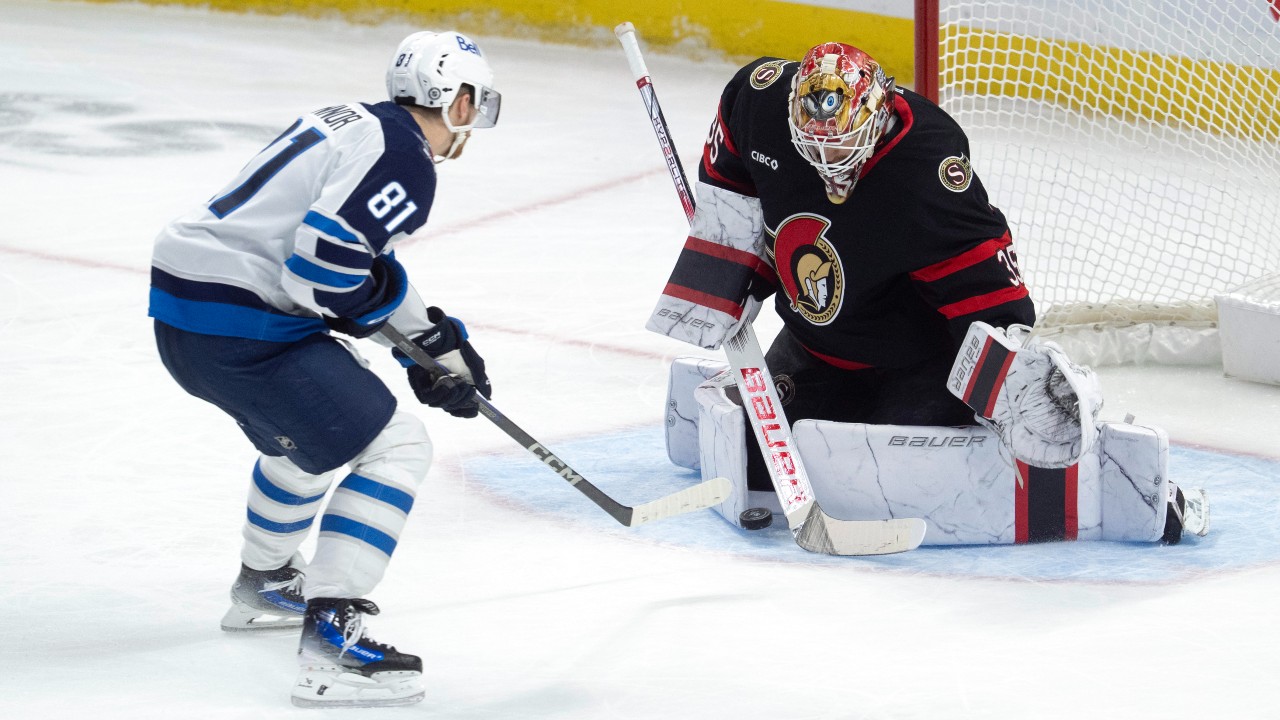
The Calgary Flames built their reputation on Darryl Sutter Hockey – that heavy-forechecking, quality-defending style that smothers opponents and wins back pucks, which makes the burden of creating offence a struggle for their opposition. On the backs of that plan, the Flames allowed the third-fewest goals during the regular season. They were a force.
The Edmonton Oilers can be given no greater compliment than the way the Flames were reduced to playing in the Battle of Alberta, chasing more and more offence to try to keep up with an Oilers top-six that simply could not be stopped. There was a desperation there that we hadn’t seen from the Flames, and by Game 5 I kept thinking, “Just catch the pass and shoot it” rather than trying to rush a one-timer on a hot pass or on one that was in a bad spot. Their usual poise disappeared.
A look at a few of those fanned one-timers in Game 5:

By the end, little of the Flames’ identity was left, not the physical play, not the elite goaltending, or the line of Gaudreau-Lindholm-Tkachuk, which was arguably the best in the league in 2021-22.
The Flames played with offensive impatience, which left room for the Oilers to fly back the other way. Too often it became a track meet, and with that style imposed on the series, the Flames, ironically, were cooked. Rush chances were 11-3 for the Oilers in Game 5.
Apparently, there was also a goal disallowed, but the things below are about how the Oilers got the Flames in a position where one play not going their way could mean the end of the series, and their season.
How did the Oilers do it?
******
McDavid-Draisaitl
I was tempted to skip over this obvious point because you, the reader, are well aware of what Connor McDavid and Leon Draisaitl do. But I just couldn’t. How could I? Everything about the Oilers hinged on this, with two players combining for **checks stats** – no, that can’t be right – **checks again** 29 points in five games. They set all kinds of records.
The Flames got much better at slowing down McDavid in Games 4 and 5, but it took all their focus and attention, which opened them up everywhere else.
Depth contributions from Kane, Hyman, RNH
In Game 5, Zach Hyman had one goal and two assists for three points, he was plus-4, he had seven shots, he played nearly 24 minutes, he led the team in hits, he had a big blocked shot, there’s just not much more I can say about this guy.
In the summer, I use a plastic oar to stir my kids’ kiddie pool and get the water going in a “whirlpool,” and that’s what happens when Hyman is on the ice. He’s an oar, and he gets the play going in the direction he’s skating whenever he’s out there.
With McDavid and Draisaitl sucking up all the attention – as they have in years past – the question was asked of the Oilers depth: when those guys see all the best defending, can you capitalize on your extra space or weaker opposition?
Hyman said yes. Evander Kane said yes; he’s on pace to threaten the all-time playoff goals record of 19 (he has 12, so if they Oilers play two more rounds … ?). Ryan Nugent-Hopkins had six points in five games; the Nuge said yes too.
McDavid and Draisaitl were like a collective boxer doing so much damage to the body in the early rounds that their opposition starts to drop their hands, while these guys were suddenly free to take shots at the head.
Good coaching
I thought Oilers coach Jay Woodcroft showed a willingness to be flexible and go away from what’s worked if it wasn’t working on a given night. Case in point: Kane had been on an unbelievable run alongside McDavid, as mentioned above. It would’ve been easy to leave him in that role, no matter what. This is speculation on my part, but I don’t think the Oil loved how Kane defended a Flames set breakout early the in the game, followed by his positioning on the Andrew Mangiapane goal. Whether it was that or something else, Woodcroft bumped Kane off that line for Hyman, who did … all the things I mentioned in the section above. It was the perfect change in a game McDavid didn’t have an inch of room and couldn’t create much or drive play. Hyman did it for that line at times.
I also given Woodcroft credit for sticking with what would give the team the best chance in the big picture: Mike Smith over Mikko Koskinen. After Game 1, he could’ve bailed on Smith and been justified. Then Game 2 starts with two softies, where you’d think he’d have a hair trigger, but he stuck with Smith yet again. The roller coaster Mike Smith Experience includes the type of highs you need to get by great opponents, and Woodcroft gave their team the chance to see that through.
An exposed weakness, and a surprise goaltending slump
Flames coach Darryl Sutter gave a telling response in a post-game when he talked about their “inexperienced defence.” They don’t have guys who’ve seen deep runs playing D for them, and, in the end, the little defensive gaffes made just enough room for the Oilers (a miscommunication with Noah Hanifin and Elias Lindholm on the OT winner cost them) to expose them. In Game 5, the Oilers had 18 slot shots to the Flames’ nine.
The Flames needed goaltending to bail them out, but Edmonton has had Jacob Markstrom’s number all year. He ended up posting just an .852 save percentage in the series, and the crease was supposed to be where the Flames had a clear advantage. I haven’t heard it said much lately, but McDavid is in an awkward body position on that OT winner and doesn’t get a ton on it. They needed a few more saves from Markstrom.
*****
When all is said and done, the Battle of Alberta was decided because the Oilers’ best players had their ‘A’ games, and that dictated everything that came next from the Flames. Calgary was reduced to counterpunching, when it had been used to coming out swinging.
In the NHL, the sport’s all-time greats almost always find their way to a championship, as at some level they become all their opponents can think about and the team around them is free to rise up. That’s what’s been happening for the Oilers, and no matter who their next opponent is, that game plan has every chance of being effective in yet another round.






